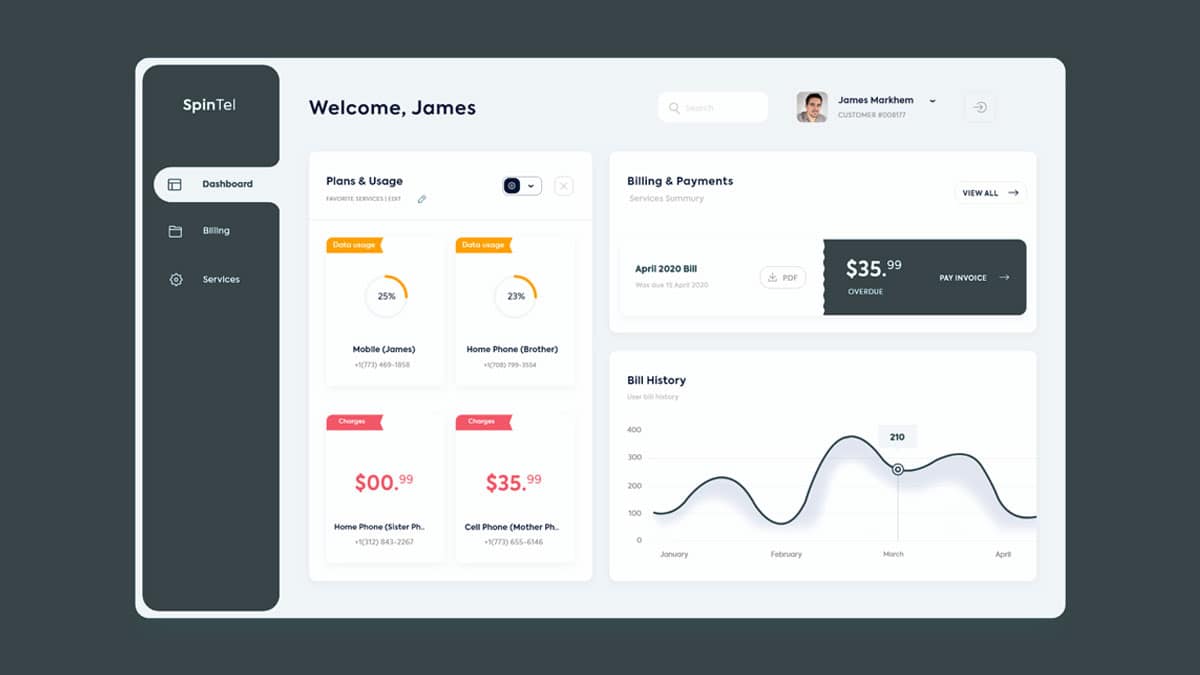The custom client portal concept stands out as an effective means for fostering and developing business-customer connections in the fast-changing environment of modern business, where digital transformation is the name of the game.
This article goes deep into the complexity of client portals, examining their importance, advantages, major features, development process, and integration opportunities, and offers insightful advice on maintaining security, privacy, customization, and branding.
Understanding the Custom Client Portal
A custom client portal is fundamentally a secure digital platform that has been carefully created to enable smooth communication and collaboration between companies and their clients. The typical business-client connection is finally pushed to new levels of efficiency and engagement thanks to this centralized hub, which acts as a channel for a variety of activities such as information sharing, document sharing, task management, and data tracking.
Its Significance
These portals have evolved as a response to the expectations for transparency, real-time communication, and customized experiences in the age of instant satisfaction and information at our fingertips. These portals foster trust, increase engagement, and significantly contribute to the long-term happiness and loyalty of clients by giving them access to a secure environment where they can track the progress of projects, access important documents, and have meaningful conversations with service providers.
Advantages for Businesses and Clients
Custom portals create mutual benefits for companies and their customers. Following is a breakdown of these advantages :
For Businesses
- Efficient communication: They go beyond the restrictions of conventional communication techniques and provide a streamlined path for interaction. As a result, conversations are smoother, response times are quicker, and miscommunication is decreased.
- Operational efficiency: By digitizing and seamlessly integrating document exchange, approvals, and feedback cycles within the portal, business processes are optimized. This lessens the administrative burden while simultaneously improving the organization’s general effectiveness.
- 24/7 accessibility: Customers have constant access to their accounts and important information. Regardless of regional limitations, this regular accessibility improves simplicity and promotes client involvement.
- Tailored experiences: These portals’ customization features enable companies to adapt their services and offerings to meet the particular demands of each client, demonstrating a dedication to providing specialized experiences.
For Clients
- Real-time updates: Instantaneous updates on project status are sent to clients, eliminating any uncertainty and the need for follow-up questions. The client feels more involved and satisfied as a result of this transparency.
- Data empowerment: Client portals enable customers to take charge of their own decisions by giving them access to transaction records, invoices, project information, and previous interactions.
- Security assurance: Leading portals are strengthened with strong security measures that guarantee the security of sensitive data and compliance with regulatory and industry-specific security standards.
These benefits work together to promote greater engagement and operational excellence, maintaining the mutually beneficial relationship between companies and customers.
Key Features of a Client Portal
A well-designed portal has a variety of features built into its architecture that increase its utility and worth:
- Document management: By acting as a single location for documents, the portal eliminates the need to search through email threads in search of crucial papers. Version management, document tracking, and simplified accessibility are all made possible by this feature.
- Task collaboration: Within the portal environment, clients and businesses may easily work together on tasks, share current project status, and have discussions. The portal becomes a virtual workspace thanks to streamlined communication and collaboration.
- Appointment scheduling: The portal’s integrated scheduling ability eliminates the challenges of scheduling conflicts, allowing customers to easily make appointments and improving overall convenience.
Developing a Custom Client Portal
The creation of a personalized client portal involves thorough preparation and implementation. Here is a step-by-step process:
- Requirements assessment: Start by developing a thorough understanding of the special requirements of your company and the expectations of your target market. The functions and scope of the portal are determined by this assessment.
- Design and development: Engage skilled developers to craft an intuitive user interface and seamless user experience. The visual aesthetics should align with your brand identity and offer a user-centric journey.
- Thorough testing: Rigorously test the portal to identify and rectify any technical glitches or usability issues. Thorough testing ensures a smooth and error-free user experience.
- Launch and Training: Once testing is complete, launch the portal and provide comprehensive training to both clients and internal stakeholders to ensure optimal utilization.
Integration With Existing Systems
A crucial first step toward operational synergy and efficiency is integrating a custom portal with your current business platforms. This incorporation guarantees:
- Data consistency: Crucial client information remains accurate and up-to-date across platforms.
- Streamlined operations: Seamless interaction between the portal and tools like CRM or project management software reduces manual efforts and accelerates workflows.
- Improved user experience: Clients can access necessary services without navigating multiple platforms, enhancing convenience.
- Informed decision-making: Real-time data exchange empowers informed strategic choices based on accurate insights.
To achieve successful integration:
- Assess compatibility: Evaluate how the portal aligns with your existing systems.
- APIs and middleware: Utilize APIs or middleware to create bridges for data exchange and functionality integration.
- Data mapping: Define how data from one system corresponds to data in another for consistency.
- Thorough testing: Validate data integrity, real-time updates, and user experience before deployment.
It’s not only about the technology when it comes to integrating client portals with current systems; it’s also about positioning your company for maximum productivity and customer satisfaction in a world where digital technology is constantly developing.
Best Practices for Success
To ensure the success and effectiveness of a custom client portal, consider these best practices:
- Prioritize security: Implement stringent security protocols to protect client data from potential breaches and unauthorized access. Adherence to data protection regulations is paramount.
- Respect privacy: Maintain a strong focus on client privacy. Ensure that data access and sharing permissions are meticulously managed and controlled.
- Branding and customization: Customize the portal’s appearance and functionality to align with your brand’s identity. A consistent and branded experience reinforces professionalism and trust.
Conclusion
The personalized client portal is emerging as a crucial innovation that fills the gap between companies and their customers as the digital world continues to change. These portals change the nature of business-customer relationships by promoting openness, facilitating communication, and boosting collaboration. Careful consideration of security, privacy, and branding issues paves the path for long-term success as firms start the road of integrating portals. Businesses may improve their engagement tactics, encourage customer loyalty, and increase operational efficiency by embracing this digital transformation. The personalized client portal is a clear example of how innovation and engagement can coexist in the age of digital transformation.








